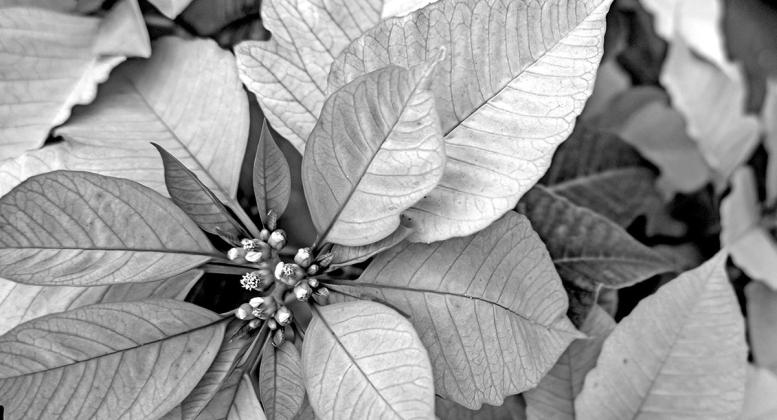Poinsettias are the beautiful red, white, and pink flowers that everyone loves during the Christmas season. There are more than 100 varieties of these flowers in the world today. Over 70 percent of all poinsettias bought in the U.S. and roughly 50 percent of all those purchased world-wide are grown at the Paul Ecke Ranch in California.
Poinsettias are a native plant of Mexico and Central America, where they grow in moist, wet, wooded ravines, and on rocky hillsides. In fact, they can grow up to 10-15 feet tall.
Poinsettias were named after Joel Roberts Poinsett, the first U.S. minister to Mexico as well as a botanist and physician, who popularized the plant and introduce it to floriculture in the late 1820’s. December 12, the anniversary of Poinsett’s death in 1851, is known as Poinsettia Day.
The Aztecs used to cultivate these plants for their vibrant colors. They called Poinsettias ‘Cuetlaxovhitl’ which stands for ‘brilliant flower’. It is said they would use them as a red dye, and use the sap to reduce fevers. So what does a Poinsettia have to do with Christmas? One interpretation is that Poinsettias are a symbol of the Star of Bethlehem, the heavenly body that led the three Wise Men to the place where Christ was born. A Mexican legend tells of a girl who could only offer weeds as a gift to Jesus on Christmas Eve. But when she brought the weeds to the church they blossomed into the beautiful red plants we call Poinsettias. In Mexico, they are known as Flores de Noche Buena “flowers of the holy night”.
There is some controversy over whether or not the plant is poisonous. A study performed at Ohio State University showed that a 50 pound child would have to eat more than 500 leaves to have a harmful effect. It is wise, however, to keep pets away from the plant’s leaves, and some people with latex allergies have had a skin reaction after touching the leaves. This is probably due to the milky sap in the plant.
Poinsettias, like all plants, can be attacked by various diseases. One of these is Pythium root rot, which attacks the roots of the Poinsettias and will cause them to change from white to brown and mushy. This can happen when Poinsettias are bought and don’t have the protective sleeve removed once home. The reason the protective sleeve must be removed is because there are no drain holes in the bottom of the sleeve, so water has the opportunity to stay put and not drain, thus stagnating and causing Pythium root rot.
Other diseases that can show up as spots or blotches on the leaves of Poinsettias are usually due to improper watering and stressing the plant. Removing the leaves and giving them proper care will usually reduce the disease. These diseases can also be prevented by not exposing them to cold or hot drafts, not drowning the Poinsettias, and not fertilizing them when in bloom. Poinsettias do best at a temperature of 60-70 degrees. If they get too cold they can turn yellow and drop their leaves. Fertilizing a Poinsettia before the Christmas season will help maintain the vibrant colors. Fertilizing after the season actually inhibits growth and health in a Poinsettia plant.

